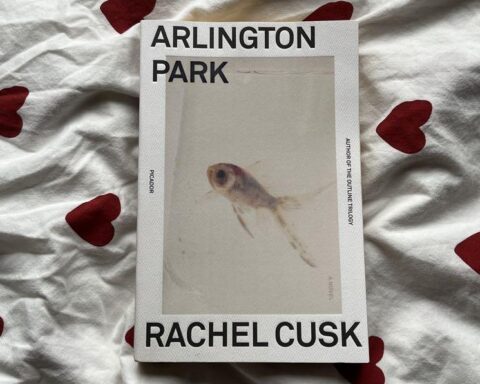In the shadowy world of modern music, few artists encapsulate the ethereal blend of dark poetry and haunting melodies like Lana Del Rey. Her songs resonate with a deep sense of melancholy and nostalgia, weaving intricate tales that evoke the sensibilities of the Beat poets. Asteria delves into the intricate layers of Del Rey’s music, exploring how her soundscape crafts a world of dark beauty, reminiscent of a dream-like state.
Prologue: Entering Lana’s Dreamscape
Lana Del Rey, born Elizabeth Woolridge Grant, burst onto the music scene with an aura of mystery and allure. From her breakout single “Video Games” to her latest works, Del Rey has cultivated a unique sonic and lyrical identity that feels both timeless and otherworldly. Her music invites listeners into a realm where past and present coalesce, where the glamour of old Hollywood meets the gritty reality of contemporary life. This fusion creates an atmosphere that is both nostalgic and haunting, a dark dreamscape that captivates the soul.
The Beat Poets’ Influence: A Literary Backdrop
To understand Del Rey’s music, one must first delve into the literary roots that inform her work. The Beat Generation, a group of post-World War II American writers, challenged the norms of their time with a raw, unfiltered approach to literature. Poets like Allen Ginsberg, Jack Kerouac, and William S. Burroughs eschewed traditional structures, favoring a spontaneous, free-flowing style that mirrored the chaos and beauty of life.
Del Rey’s lyrics echo this beat sensibility. Her songs often read like fragmented poetry, capturing fleeting moments of love, loss, and longing. In “Born to Die,” she croons, “Feet don’t fail me now / Take me to the finish line / Oh, my heart, it breaks every step that I take.” The imagery here is visceral, evoking a sense of impending doom that is quintessentially Beat. Her words flow like a stream of consciousness, creating an immersive experience that transports listeners into her world.

The Sound of Shadows: Ethereal Production
Del Rey’s music is not just about the lyrics; it’s also about the soundscapes she creates. Her production choices contribute significantly to the dark, ethereal quality of her work. She often employs lush, orchestral arrangements juxtaposed with minimalist electronic beats, creating a sonic contrast that feels both grand and intimate. This duality mirrors the tension in her lyrics, where beauty and tragedy coexist.
In tracks like “Summertime Sadness,” the sweeping strings and echoing vocals create a sense of grandeur, while the subtle electronic undertones add a layer of modernity. This blend of old and new, grand and intimate, forms the backbone of Del Rey’s sound. It’s a sonic embodiment of the chiaroscuro technique used in visual art, where light and dark interplay to create depth and drama.
Nostalgia and Melancholy: Themes of Lost Love
A central theme in Del Rey’s music is nostalgia—a longing for a past that is simultaneously romanticized and lamented. This sense of yearning is deeply poetic, reminiscent of the Beat poets’ quest for meaning in a rapidly changing world. Del Rey’s lyrics often reflect a desire to escape the present, to return to a time of innocence or to relive a lost love.
In “Young and Beautiful,” she sings, “Will you still love me when I’m no longer young and beautiful?” This question, laden with vulnerability and uncertainty, captures the essence of her nostalgic longing. It’s a plea for permanence in a transient world, a desire to hold onto moments that inevitably fade away. This theme of impermanence, of beauty and youth slipping through one’s fingers, is a poignant echo of the Beat poets’ existential musings.
Femme Fatale: The Persona of Lana Del Rey
Del Rey’s music is also characterized by her carefully crafted persona—the femme fatale. This archetype, with roots in film noir and classic literature, embodies a blend of allure and danger. Del Rey’s vocal delivery, with its sultry, languid tones, enhances this persona. She often sings from the perspective of a tragic heroine, a woman caught in the throes of passionate but doomed love.
In “Ultraviolence,” she embodies this character fully: “He used to call me DN / That stands for deadly nightshade / ‘Cause I was filled with poison / But blessed with beauty and rage.” Here, Del Rey juxtaposes beauty and danger, innocence and corruption. This duality is central to her music, creating a complex, multifaceted character that listeners are drawn to, even as they are warned of the peril she represents.
Cinematic Influences: Crafting Visual Soundscapes
Del Rey’s music is often described as cinematic, and for good reason. Her songs are rich with visual imagery, painting pictures with sound. This cinematic quality is another layer of her dark, ethereal poetry. She draws inspiration from the golden age of Hollywood, incorporating references to classic films and icons into her lyrics and visuals.
In “Ride,” Del Rey evokes the image of a drifter, a character straight out of a mid-century road movie: “I hear the birds on the summer breeze, I drive fast / I am alone in midnight / Been tryin’ hard not to get into trouble, but I / I’ve got a war in my mind.” The imagery here is vivid and evocative, creating a sense of movement and isolation that is deeply cinematic. Her music becomes a soundtrack to an imagined film, a series of vignettes that together tell a larger story.
Ethereal Vocals: The Voice as an Instrument
Del Rey’s voice is a crucial element of her dark, ethereal sound. Her vocal delivery is often described as haunting, with a breathy, almost ghostly quality that adds to the dreamlike atmosphere of her music. She uses her voice as an instrument, modulating it to convey different emotions and enhance the mood of her songs.
In “Video Games,” her vocals are soft and wistful, almost a whisper: “It’s you, it’s you, it’s all for you / Everything I do.” This intimate delivery creates a sense of vulnerability, drawing the listener into her inner world. In contrast, in “High By The Beach,” her voice takes on a more detached, almost icy tone: “The truth is I never bought into your bullshit / When you would pay tribute to me.” This vocal versatility allows Del Rey to navigate a range of emotions and personas, adding depth to her musical storytelling.
The Dreamlike State: Oneiric Qualities in Lana’s Music
One of the most striking aspects of Del Rey’s music is its ability to evoke a dreamlike state. Her songs often feel like they exist in a liminal space, somewhere between waking and dreaming. This oneiric quality is achieved through her use of reverb-drenched production, slow tempos, and echoing vocals, creating a sense of timelessness and unreality.
In “Blue Jeans,” the combination of reverb-heavy guitar and languid vocals creates an atmosphere that feels suspended in time: “Blue jeans, white shirt / Walked into the room, you know you made my eyes burn.” The imagery here is vivid yet surreal, like a memory that has been distorted by time and emotion. This dreamlike quality is a hallmark of Del Rey’s music, drawing listeners into a world that is at once familiar and otherworldly.
The Allure of Darkness: Embracing the Shadow
Del Rey’s music is unafraid to explore the darker aspects of the human experience. Themes of heartbreak, addiction, and existential despair are woven throughout her work, creating a sense of authenticity and raw emotion. This willingness to confront the shadow side of life is a key element of her dark, ethereal poetry.
In “Dark Paradise,” she sings, “Every time I close my eyes / It’s like a dark paradise / No one compares to you / I’m scared that you won’t be waiting on the other side.” The metaphor of a dark paradise captures the essence of Del Rey’s music—a place where beauty and sorrow coexist, where the allure of darkness is impossible to resist. This embrace of the shadow, this acknowledgment of life’s inherent pain, is what gives her music its profound emotional impact.

The Intersection of Art and Reality: Del Rey’s Visual Aesthetics
Lana Del Rey’s artistry extends beyond her music, deeply entwined with visual elements that enhance the listening experience. Her music videos, album artwork, and public persona are meticulously curated to reflect the dark, ethereal themes of her music. The aesthetic choices she makes are not merely superficial; they are integral to understanding the poetic narrative she weaves.
Music Videos: Visual Poetry in Motion
Del Rey’s music videos are cinematic masterpieces, each one a short film that adds layers of meaning to her songs. They are characterized by their lush, vintage aesthetics and often feature motifs of Americana, tragic romance, and melancholy. These visual narratives are steeped in nostalgia, much like her music, and often employ symbolism and imagery that evoke a sense of timelessness and decay.
In the video for “Born to Die,” Del Rey is seen in a majestic cathedral, flanked by tigers, and later driving in a car with her lover, ending in a fatal crash. The imagery is rich with symbolism: the cathedral suggests grandeur and mortality, the tigers hint at ferocity and untamed nature, and the car crash is a poignant reminder of the fragility of life and love. Each frame is carefully constructed to evoke a sense of beauty intertwined with tragedy, reinforcing the song’s themes.
Album Artwork: A Glimpse into Lana’s World
The album covers of Lana Del Rey are portals into her musical universe. They often feature her gazing directly into the camera, a blend of vulnerability and defiance in her eyes, surrounded by elements that evoke a bygone era. The cover of “Born to Die,” for instance, features Del Rey in a white blouse against a backdrop of blue sky and palm trees, reminiscent of classic Hollywood glamour. This imagery sets the tone for the album, suggesting a fusion of innocence and experience, beauty and decay.
Public Persona: The Living Poem
Del Rey’s public persona is as carefully crafted as her music and visuals. She embodies the archetype of the tragic heroine, a figure who is both alluring and doomed. Her interviews and public appearances often reflect this persona, maintaining an air of mystery and melancholy. This deliberate crafting of her public image enhances the overall narrative of her work, blurring the lines between art and reality.

The Poetic Lexicon: Language and Lyricism
One cannot discuss Lana Del Rey’s music without delving into the richness of her language. Her lyrics are replete with literary references, evocative imagery, and a lexicon that conjures a world of dark romance and existential musings. Her use of language is not merely ornamental but serves to deepen the emotional impact of her songs.
Literary Allusions: Echoes of the Past
Del Rey frequently employs literary allusions in her lyrics, drawing from a wide range of influences. These references add a layer of depth to her music, inviting listeners to explore the intertextual connections. In “Carmen,” she sings, “Darling, darling, doesn’t have a problem / Lying to herself ’cause her liquor’s top shelf.” The name “Carmen” evokes Bizet’s opera, with its themes of passion and tragedy, while the lyrics themselves paint a portrait of a modern-day femme fatale.
Evocative Imagery: Painting with Words
Del Rey’s lyrics are rich with evocative imagery, creating vivid scenes that linger in the mind. In “Shades of Cool,” she describes a lover with “a cobalt color arm” and “a suntanned silver smile.” The use of color imagery here is striking, creating a sense of otherworldly beauty. Her ability to paint such vivid pictures with words is a testament to her poetic prowess, making her songs feel like visual art in their own right.
Lexical Choices: Crafting an Aesthetic
The choice of words in Del Rey’s lyrics is deliberate and carefully considered, contributing to the overall aesthetic of her music. She often uses archaic or formal language, lending a timeless quality to her songs. In “Salvatore,” she sings, “All the lights in Miami begin to gleam / Ruby, blue, and green, neon too.” The use of “gleam” instead of “shine” or “glow” gives the line a poetic elegance, while the mention of specific colors adds to the vividness of the imagery. These lexical choices are not merely stylistic but serve to enhance the immersive quality of her music.
The Timeless Appeal of Lana Del Rey’s Dark Poetry
Lana Del Rey’s music stands as a testament to the power of dark, ethereal poetry in contemporary music. Her ability to blend the sensibilities of the Beat poets with modern production techniques creates a unique soundscape that is both nostalgic and forward-looking. Through her haunting vocals, cinematic imagery, and exploration of the human condition’s darker aspects, Del Rey crafts a world that is deeply compelling and richly poetic.
In a world where much of mainstream music focuses on superficial pleasures, Del Rey’s work invites listeners to delve deeper, to explore the shadows, and to find beauty in the melancholic and the ephemeral. Her music is a dark serenade, a dreamlike journey through the complexities of love, loss, and longing. It is this profound emotional resonance, this ability to evoke a sense of timelessness and otherworldliness, that ensures Lana Del Rey’s place as one of the most intriguing and influential artists of her generation.

The Interplay of Light and Darkness: Themes in Lana’s Discography
Lana Del Rey’s discography is a labyrinthine journey through themes of light and darkness, a chiaroscuro of human experience that reflects the dualities of existence. Her albums, from “Born to Die” to “Norman Fucking Rockwell!” and beyond, are cohesive explorations of these themes, each song a vignette in the larger tapestry of her work.
The Glamour of Decay: “Born to Die” and “Paradise”
“Born to Die” is an album steeped in the glamour of decay, where the allure of beauty is inextricably linked with the inevitability of death. The title track sets the tone with its lush orchestration and lyrics that juxtapose the vitality of life with its transient nature: “Come and take a walk on the wild side / Let me kiss you hard in the pouring rain / You like your girls insane.”
The “Paradise” EP, a companion piece to “Born to Die,” continues this exploration with songs like “Ride,” where Del Rey sings of freedom and existential ennui: “I hear the birds on the summer breeze, I drive fast / I am alone in midnight / Been tryin’ hard not to get into trouble, but I / I’ve got a war in my mind.” The imagery of driving fast and feeling a war within captures the tension between the desire for liberation and the weight of internal conflict.
The American Dream and Its Discontents: “Ultraviolence”
“Ultraviolence” delves deeper into the dark side of the American Dream, exploring themes of toxic relationships, addiction, and disillusionment. The album’s title track, “Ultraviolence,” references Anthony Burgess’s novel “A Clockwork Orange,” with its themes of violence and control: “He used to call me DN / That stands for deadly nightshade / ‘Cause I was filled with poison / But blessed with beauty and rage.”
Songs like “Shades of Cool” and “West Coast” further explore the dichotomy of glamour and decay, with Del Rey’s haunting vocals painting a picture of a world where beauty is both a blessing and a curse. The album’s sonic palette, characterized by reverb-drenched guitars and lush string arrangements, enhances its thematic exploration of light and darkness.

Nostalgia and Loss: “Honeymoon”
“Honeymoon” is an album that revels in nostalgia and loss, with Del Rey’s lyrics reflecting a longing for a past that is both romanticized and irretrievable. The title track, “Honeymoon,” evokes a sense of languid melancholy: “We both know that it’s not fashionable to love me / But you don’t go ’cause truly there’s nobody for you but me.” The use of vintage instrumentation, including sweeping strings and muted trumpets, creates a soundscape that is both timeless and evocative.
Songs like “Terrence Loves You” and “God Knows I Tried” continue this exploration of nostalgia and loss, with Del Rey’s lyrics and vocal delivery conveying a sense of wistful longing. The album’s production, characterized by its lush arrangements and atmospheric textures, enhances its themes of memory and melancholy.
The Journey of Self-Discovery: “Lust for Life”
“Lust for Life” marks a shift in Del Rey’s thematic exploration, with a focus on self-discovery and personal growth. The album’s title track, featuring The Weeknd, is a celebration of life and love: “Take off all your clothes / They say only the good die young / That just ain’t right / ‘Cause we’re having too much fun.”
Songs like “Love” and “Change” reflect a more optimistic outlook, with Del Rey’s lyrics expressing a desire for connection and transformation. The album’s production, characterized by its blend of vintage and contemporary elements, enhances its themes of renewal and self-discovery.
The Reflection of Society: “Norman Fucking Rockwell!”
“Norman Fucking Rockwell!” is a reflection on contemporary society, with Del Rey’s lyrics addressing themes of cultural disillusionment and personal introspection. The album’s title track is a scathing critique of modern masculinity: “Goddamn, man-child / You fucked me so good that I almost said, ‘I love you.'”
Songs like “Venice Bitch” and “Mariners Apartment Complex” continue this exploration, with Del Rey’s lyrics reflecting a blend of personal reflection and societal critique. The album’s production, characterized by its use of lush orchestration and minimalist arrangements, enhances its thematic exploration of cultural and personal disillusionment.
The Resilience of the Human Spirit: “Chemtrails over the Country Club”
“Chemtrails over the Country Club” explores themes of resilience and the search for meaning in a tumultuous world. The title track reflects Del Rey’s longing for simplicity and escape: “I’m not unhinged or unhappy, I’m just wild.” The imagery of chemtrails and country clubs evokes a sense of contrast between the artificial and the natural, the controlled and the wild.
Songs like “White Dress” and “Let Me Love You Like a Woman” continue this exploration of resilience and introspection, with Del Rey’s lyrics and vocal delivery conveying a sense of vulnerability and strength. The album’s production, characterized by its blend of folk and pop elements, enhances its themes of resilience and self-discovery.
The Evolution of an Artist: Lana Del Rey’s Ongoing Journey
Lana Del Rey’s music is a testament to her evolution as an artist, with each album reflecting a new chapter in her journey of self-discovery and artistic exploration. Her ability to blend dark, ethereal poetry with contemporary production techniques creates a unique soundscape that is both nostalgic and forward-looking. Through her haunting vocals, cinematic imagery, and exploration of the human condition’s darker aspects, Del Rey crafts a world that is deeply compelling and richly poetic.
In a world where much of mainstream music focuses on superficial pleasures, Del Rey’s work invites listeners to delve deeper, to explore the shadows, and to find beauty in the melancholic and the ephemeral. Her music is a dark serenade, a dreamlike journey through the complexities of love, loss, and longing. It is this profound emotional resonance, this ability to evoke a sense of timelessness and otherworldliness, that ensures Lana Del Rey’s place as one of the most intriguing and influential artists of her generation.

Lana Del Rey’s Music as a Cultural Mirror
Lana Del Rey’s music not only reflects her personal journey but also serves as a cultural mirror, capturing the zeitgeist of the times. Her exploration of themes such as disillusionment, nostalgia, and the search for meaning resonates deeply with listeners in an era characterized by rapid change and uncertainty.
Disillusionment and Critique: A Voice for the Modern Era
Del Rey’s music often critiques contemporary society, addressing issues such as the superficiality of fame, the complexities of modern relationships, and the pervasive sense of disillusionment. In “Fuck It I Love You,” she sings, “I moved to California, but it’s just a state of mind / It turns out everywhere you go, you take yourself, that’s not a lie.” This line captures the sense of existential ennui that permeates much of her work, reflecting the disillusionment felt by many in a world where external success often fails to bring inner fulfillment.
Nostalgia and the Search for Meaning: Longing for a Bygone Era
Nostalgia is a recurring theme in Del Rey’s music, reflecting a longing for a simpler, more innocent time. This yearning is particularly poignant in songs like “Old Money,” where she sings, “Blue hydrangea, cold cash divine / Cashmere, cologne, and white sunshine / Red racing cars, Sunset and Vine / The kids were young and pretty.” The imagery of blue hydrangeas and red racing cars evokes a sense of timeless beauty, while the mention of Sunset and Vine, a famous intersection in Hollywood, grounds the song in a specific cultural context.
The Search for Meaning: Existential Musings
Del Rey’s music often grapples with existential questions, exploring themes of identity, purpose, and the search for meaning in a chaotic world. In “Mariners Apartment Complex,” she sings, “You lose your way, just take my hand / You’re lost at sea, then I’ll command your boat to me again.” The metaphor of being lost at sea and finding guidance in another person reflects the human desire for connection and direction amidst life’s uncertainties.
The Poetic Lexicon: Crafting a Unique Voice
Del Rey’s lyrical style is marked by its poetic lexicon, a blend of high and low diction that creates a unique voice. She seamlessly transitions between the vernacular and the literary, crafting lyrics that are both accessible and richly layered. In “Norman Fucking Rockwell,” she juxtaposes colloquial language with poetic imagery: “Goddamn, man-child / You fucked me so good that I almost said, ‘I love you.'” This blend of raw honesty and lyrical beauty is a hallmark of her songwriting, reflecting the complexities of the human experience.

The Evolution of Lana Del Rey’s Artistic Vision
Over the years, Lana Del Rey’s artistic vision has evolved, reflecting her growth as an artist and a person. From the cinematic grandeur of her early work to the introspective lyricism of her later albums, Del Rey’s music has continually pushed the boundaries of genre and style. Her willingness to explore new sounds and themes while staying true to her unique voice has cemented her status as a visionary artist.
Early Work: Cinematic Grandeur and Dark Romance
Del Rey’s early work, including “Born to Die” and “Paradise,” is characterized by its cinematic grandeur and themes of dark romance. These albums established her signature sound, a blend of lush orchestration and haunting vocals that evoke a sense of timeless beauty and melancholy. Songs like “Blue Jeans” and “Video Games” introduced listeners to Del Rey’s world, where love is passionate but doomed, and beauty is tinged with sadness.
Mid-Career: Introspection and Experimentation
As her career progressed, Del Rey’s music began to reflect a deeper sense of introspection and experimentation. Albums like “Ultraviolence” and “Honeymoon” saw her exploring new sonic landscapes, incorporating elements of rock, jazz, and even hip-hop into her music. Her lyrics became more introspective, delving into themes of identity, self-discovery, and existential longing. Songs like “West Coast” and “Terrence Loves You” showcased her ability to blend different genres and styles, creating a sound that was uniquely her own.
Recent Work: Cultural Critique and Personal Reflection
In her more recent work, including “Norman Fucking Rockwell!” and “Chemtrails over the Country Club,” Del Rey has turned her gaze outward, using her music to comment on contemporary society and culture. These albums are marked by their sharp lyrical critiques and personal reflections, as Del Rey grapples with the complexities of fame, identity, and artistic expression. Songs like “The Greatest” and “White Dress” reflect a mature, reflective artist who is unafraid to confront the contradictions and challenges of modern life.

The Lasting Impact of Lana Del Rey’s Music
Lana Del Rey’s music has left an indelible mark on contemporary music and culture. Her ability to blend dark, ethereal poetry with modern production techniques has created a unique sound that resonates with listeners around the world. Her exploration of themes such as love, loss, disillusionment, and the search for meaning has made her music deeply relatable, while her cinematic imagery and haunting vocals have made it profoundly evocative.
Influence on Contemporary Music
Del Rey’s influence on contemporary music can be seen in the work of numerous artists who have drawn inspiration from her unique sound and style. Her blend of vintage and modern elements, her use of cinematic imagery, and her exploration of dark, poetic themes have inspired a new generation of musicians to push the boundaries of genre and style. Artists like Billie Eilish, Lorde, and Halsey have cited Del Rey as an influence, reflecting her impact on the evolving landscape of popular music.
Cultural Impact
Beyond her influence on music, Del Rey’s work has had a significant impact on contemporary culture. Her exploration of themes such as nostalgia, disillusionment, and the search for meaning resonates with listeners in an era characterized by rapid change and uncertainty. Her music serves as a cultural mirror, reflecting the complexities and contradictions of modern life. Her carefully crafted persona, visual aesthetics, and poetic lyricism have made her an icon of modern artistry, a figure who embodies the tensions and beauties of the contemporary world.

The Legacy of Lana Del Rey
As Lana Del Rey continues to evolve as an artist, her legacy remains firmly established. Her music, with its blend of dark, ethereal poetry and modern production, has created a unique soundscape that is both timeless and forward-looking. Her exploration of the human condition, with all its complexities and contradictions, has made her music deeply resonant and profoundly evocative. In a world where much of mainstream music focuses on superficial pleasures, Del Rey’s work invites listeners to delve deeper, to explore the shadows, and to find beauty in the melancholic and the ephemeral.
In conclusion, Lana Del Rey’s music is a dark serenade, a dreamlike journey through the complexities of love, loss, and longing. It is this profound emotional resonance, this ability to evoke a sense of timelessness and otherworldliness, that ensures Lana Del Rey’s place as one of the most intriguing and influential artists of her generation. As she continues to push the boundaries of genre and style, her music will undoubtedly continue to captivate and inspire listeners around the world.









